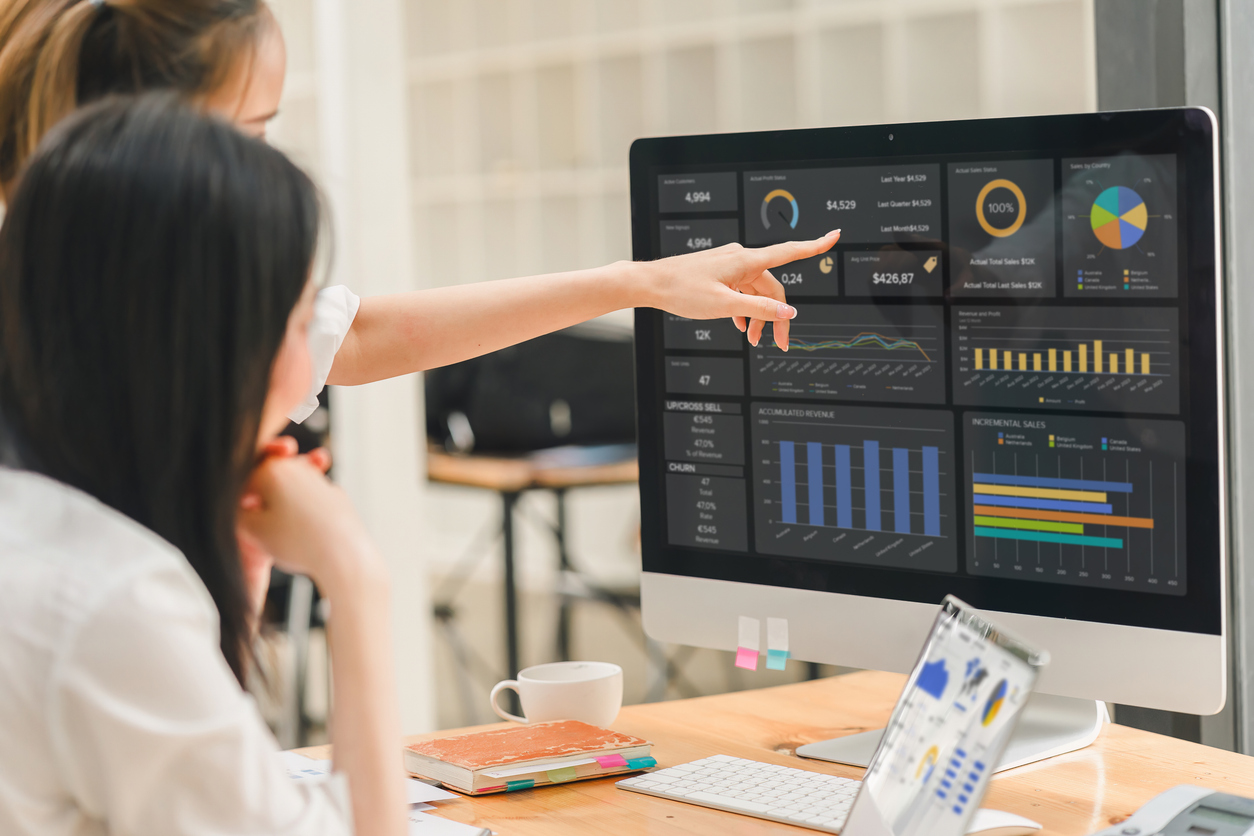What Are Cybersecurity and Data Analytics?
Cybersecurity and data analytics are two different disciplines that fall under the IT umbrella. Data analytics is a branch of data science that focuses on extracting actionable insights from data, and cybersecurity focuses on safeguarding data.Understanding Data Analytics
Data analytics focuses on the collection, analysis, and interpretation of often vast pools of data in an effort to discover actionable trends or insights that can positively impact business decisions. More than just a process, data analysis is a powerful tool that makes strategic planning possible, and it occurs in six steps:- Defining Objectives: Every analysis seeks to meet an objective or answer a question, and defining those objectives early on is important for efficiency. This step also involves defining the metrics required to measure the outcomes of the analysis.
- Collecting Data: The next step involves collecting data that’s relevant to the defined objectives. Data collection can use various methods, including surveys or observations. It may even come from existing databases.
- Cleaning Data. Cleaning (or cleansing) data involves carefully checking for errors or irrelevancies and then removing that information from the data pool. When the data is more reliable, so are the insights it provides.
- Analyzing Data. Analysis can only occur once the data required for the objective has been collected and cleansed. Data analysts use one or more mathematical techniques or sophisticated software to find trends or patterns.
- Interpreting and Visualizing Data. Data visualization may involve translating the output of data analysis into visual formats, such as charts, graphs, and reports that others can easily share and interpret.
- Telling a Story. Finally, data analysis involves telling a story or creating a narrative that makes the findings easy to understand. The narrative often accompanies the visual aids and is geared toward nontechnical decision-makers within the company.
Understanding Cybersecurity
Cybersecurity protects data. This involves safeguarding against data leaks and preventing unauthorized personnel — including those within an organization and potential cybercriminals — from accessing secure networks containing sensitive or confidential information. Every modern business uses some sort of IT, and while some depend more heavily on the digital realm than others, protecting the data is essential to any organization’s success. There are several types of cybersecurity, including the following:- Critical Infrastructure Security: Critical infrastructure security protects computers and networks that keep organizations operational. It also encompasses the technologies, processes, and protections companies have established to keep their critical infrastructure secure.
- Network Security: Network security is more specific and focuses primarily on firewalls, virtual private networks (VPNs), access control, antivirus and antimalware technology, and other safeguards that keep networks safe.
- Endpoint Security: An endpoint is any device connected to an organization’s network. This may include desktop computers and printers, and in contemporary settings, it may also include TVs and mobile devices.
- Application Security: Application security is a set of processes that keeps individual applications safe from cyber attacks. Examples are fixing bugs in an application’s code or writing new code to implement two-factor authentication.
- Information Security: Information security protects data. It applies to electronic health records (EHRs) in doctors’ offices and hospitals, customer and client information in large companies, and other forms of proprietary or personally identifiable information (PII).
- Cloud Security: Cloud-based data passes from different endpoints and applications regularly, exposing it to security risks. Cloud security keeps the data and applications safe from attacks.**
- Mobile Security: Mobile security is specific to smartphones; smartwatches; tablets; and other devices that contain, send, and receive personal information regularly.
- Internet of Things Security: The IoT connects high-tech devices, such as smart TVs; heating, ventilating, and air-conditioning (HVAC) systems; lights and controls; and refrigerators. Even these seemingly simple devices can provide an entry point for cybercrime.
